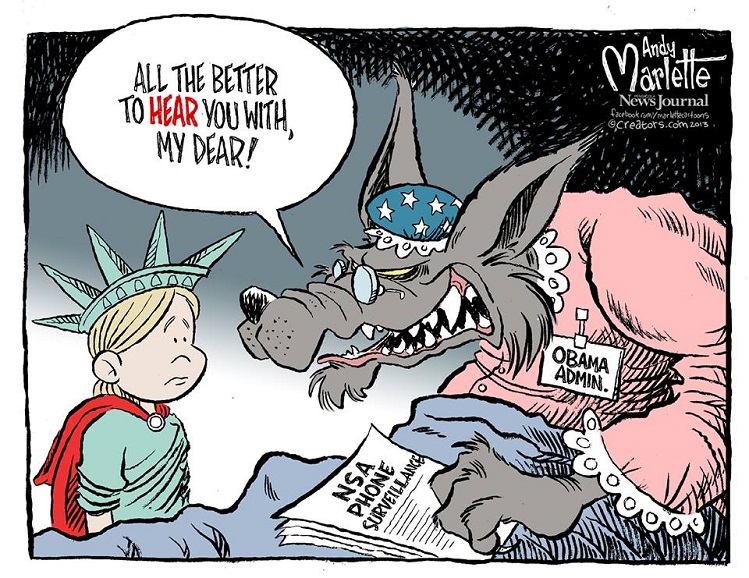Communicating Through Fairy Tales
One of the most interesting and commonly discussed features of fairy and folk tales are their universality and the extent to which they are a part of our shared culture. On an unconscious level, phycologist Carol Jung argued that fairy tales represent collections of archetypal images which speak to the most basic and universal aspects of the human experience, from growing up to falling in love. The popularity of some fairy tales in particular have also made them into cultural touch stones, which allows their images and famous plot points be used quite consciously to make political or social points through a shared understanding of the source material between artist and viewer/reader.
In the case of this cartoon by Andy Marlette, a famous scene from the story of "Little Red Riding Hood" is used to make a point about U.S. government surveillance, an issue decidedly removed from the original context of the story. Our knowledge of the story, however, allows us to nonetheless immediately understand what the author is trying say, with his association of the wolf with government surveillance clearly demonstrating that he believes it to be negative thing. The fact the wolf is described in the classical version of the story as a neighbor (somebody who might be instinctively trusted) also seems to serve as a warning against trusting a government with these types of powers just because we do not believe that they will at this point abuse them. Just as many interpret the story of Little Red Riding Hood as a warning against naively trusting that others will always have good intentions, this cartoon gives a similar warning about government and security.
We are able to understand this cartoon, first and foremost, because we know the story of Little Red Riding Hood and so understand what it is referencing. It therefore provides an excellent example of how the fairy tales can be reinterpreted or reframed to help us explore not only the universal aspects of the experiences described by Jung, but also the particulars which are different in every place and time.
Picture Credit:
https://www.commonsenseevaluation.com/wp-content/uploads/2013/06/The-Big-Bad-Wolf.jpg

Comments
Post a Comment